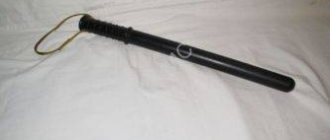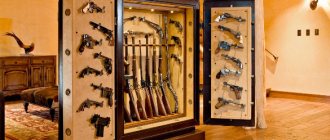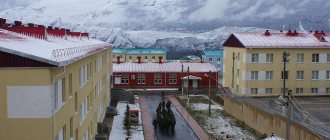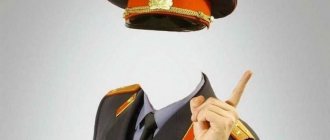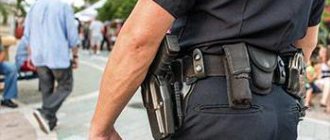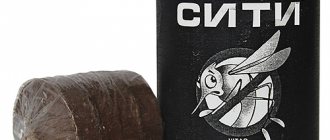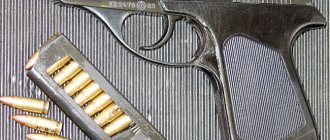Order of the Ministry of Internal Affairs of the Russian Federation dated July 26, 2013 N 575, Moscow how to sew on new police chevrons . The chevrons be sewn police uniform on the outside of the sleeve, at a distance of 80 mm from the top edge of the chevron to the shoulder.
Left sleeve : sleeve insignia indicating membership in the Internal Affairs of Russia
Right sleeve : sleeve insignia indicating affiliation with a specific unit.
The chevron on a summer shirt with short or long sleeves ! General - on the left sleeve, about belonging to the unit - on the right.
Chevron patch on police uniform
Aviation Division
. The sleeve insignia is not worn.
Camouflage
. The sleeve insignia is not worn.
Special police
.
Stripes on the back and left front of the suit.
police departments
.
DPS traffic police chevron patch is on the left side of the suit. “Police” and “ DPS stripes and reflective materials are on the back.
Special forces units
.
“OMON” and “SOBR”
stripes Special police of the Special Purpose Center for Private Security of the Ministry of
.
“Police”
patches Police Regiment of the Special Purpose Security Center of the Ministry of
.
patches in camouflage green colors.
How to sew a police patch on a shirt?
Sleeve insignia are worn on both long-sleeved and short-sleeved shirts.
The same applies to women's uniforms: the sleeve insignia is worn on all blouses. On white shirts and blouses a patch with a white background is worn, on blue ones - with a blue background.
The distance from the top edge of the patch to the shoulder seam is 8 cm.
The badge is worn by traffic police officers and employees on external duty. The latter also have a badge on the right pocket.
Police chevron locations: badges
On jackets, raincoats, vests . The patch is attached to the left breast pocket with a pin.
On shirts, blouses, jumpers, sweaters . The patch is attached to the flap of the left breast pocket using a folding button or a pin.
On the jacket . The patch is attached to the left side of the chest 1 cm below the order ribbons or in their place using a pin.
On coats , woolen jackets, demi-season raincoats. The patch is attached to the left side of the chest 8 cm below the lapel ledge using a pin.
On coat , a sheepskin jacket. The patch is attached to the left side of the chest 4 cm below patch using a pin.
Location of chevrons on police uniforms
We still have the right side of our chest free. What is sewn there?
On the right side of the chest are the badges of the Ministry of Internal Affairs of Russia. They are located horizontally in one row from left to right with intervals of 5 mm, to the right of the badge of graduation from an educational institution. The total number of badges in a row is no more than three.
Badges for commanding officers are located 1 cm above these badges.
Now do you understand how to properly sew on police chevrons? This is it, the arrangement of the Ministry of Internal Affairs chevrons!
On which uniform item - what chevrons to sew on?
The new police uniform appeared in 2013: on the wave of changes in all government institutions. They started by returning the department to its old, pre-Soviet name. By the way, do you know that the word “militia” means “people’s militia” and appeared spontaneously during the era of revolutions? So it’s not us who are looking at the West, it’s us who pay attention to the meaning of words in our native language.
So, the new police uniform is the most conducive to creating a new image of the police of the 21st century. Let's see what she looks like and learn more about her!
Casual police uniform
Patches for everyday wear police :
On the left sleeve there is a general patch of the Ministry of Internal Affairs , 8 cm from the shoulder seam
On the right sleeve there is a patch of a specific unit, 8 cm from the shoulder seam
Police exit uniform
Patches on the output form police On the left sleeve – general stripe Ministry of Internal Affairs , 8 cm from the shoulder seam
On the right sleeve there is a patch of a specific unit, 8 cm from the shoulder seam
Police uniform for external duty
Patches on a police uniform for external duty
On the left sleeve there is a general patch of the Ministry of Internal Affairs , 8 cm from the shoulder seam
On the right sleeve there is a patch of a specific unit, 8 cm from the shoulder seam
Police uniform for external duty: employees with a special police rank
Patches on the form police On the left sleeve there is a common patch Ministry of Internal Affairs , 8 cm from the shoulder seam
On the right sleeve there is a patch of a specific unit, 8 cm from the shoulder seam
On the stick above the left breast pocket is a “Police” badge.
On the left side of the chest there is a badge of the Ministry of Internal Affairs , 4 cm below “Police” stripe
On the right side of the chest is a badge On the back of a suit or coat is a “Police” badge.
Police Uniform: Cavalry Units
Policemen chevrons On the left sleeve there is a common patch Ministry of Internal Affairs , 8 cm from the shoulder seam
On the right sleeve there is a patch of a specific unit, 8 cm from the shoulder seam
On the stick above the left breast pocket is a “Police” badge.
On the left breast pocket there is a badge of the Ministry of Internal Affairs
Police uniform: traffic police combat units
Chevrons on a new form police On the left sleeve there is a common patch Ministry of Internal Affairs , 8 cm from the shoulder seam
On the right sleeve there is a patch of a specific unit, 8 cm from the shoulder seam
On the stick above the left breast pocket there is a “ DPS STSI ”
On the left side of the chest there is a badge of the Ministry of Internal Affairs , 4 cm below “Police” stripe
On the back of the suit or coat there is a “DPS Police” badge.
Police uniform: special forces departments, SOBR and OMON
Chevrons on the new police On the left sleeve there is a general patch of the Ministry of Internal Affairs , 8 cm from the shoulder seam
On the right sleeve there is a patch of a specific unit, 8 cm from the shoulder seam
Cadets uniform
Patches on the cadets' uniform
On the left sleeve there is a general patch of the Ministry of Internal Affairs , 8 cm from the shoulder seam
On the right sleeve there is a patch of a specific unit, 8 cm from the shoulder seam
Chevrons on a police uniform
New stripes . The most important of them is the badge , made of aluminum. This sign indicates the number under which a specific employee is recorded in the database. traffic police officers this sign is round, for others it is oval. Chevrons are still worn on the shoulders and chest.
There is also a new element of the form - a badge , where you can read the employee’s first and last name.
How and where to hang medals on a jacket
Norm for wearing medals.
Strict rules, mandatory for compliance by all people working in the Ministry of Internal Affairs, prescribe the following standards for wearing medals:
- weekend woolen jackets and uniform jackets are suitable clothing for state awards;
- regulatory standards establish an arrangement in horizontal rows, from left to right and from top to bottom;
- the order of placement of medals depends on the level of the department that awarded the employee of the authorities: the Russian Federation and the USSR are in priority, followed by the distinctive signs of the Ministry of Internal Affairs and other structures;
- from 2 to 5 state awards can be combined with blocks on a common bar;
- the maximum number of such levels of arrangement is no more than three, each at a distance of 35 mm below the previous one;
- The upper border of the first row of medals for management personnel is placed at a distance of 70 mm below the lapel ledge line, for other law enforcement officers - 20 mm below.
The simultaneous placement of ribbons of orders and medals adjacent to similar badges is not permitted. Police officers are prohibited from wearing distinctive insignia of public formations on their official clothing.
Features of the new form of the Ministry of Internal Affairs
A different color immediately catches your eye: the dark gray uniform was changed to dark blue, almost black, which looks great. Immediately our police force became stylish and modern.
The form was tested in regions with different climatic conditions, so it perfectly takes into account weather changes. Here you can find a wind- and moisture-proof suit , membrane-coated fabric, demi-season clothing , a jumper and even a baseball cap! They added lycra to woolen clothes: now they don’t wrinkle so much.
Dates for wearing uniforms of the Ministry of Internal Affairs 2020
It should be noted that the appearance and number of different items included in the list of uniforms currently allow employees to look decent and add some variety to their official wardrobe. However, the quality of the fabric from which this uniform is made often leaves much to be desired.
All these and other rules, statements, recommendations and prohibitions related to the peculiarities of wearing uniforms are very reasonable and fair. They are not designed in any way to infringe upon the rights of employees.
Rules for wearing uniforms by police officers in the Russian Federation in 2019
Each set of winter and summer, festive and everyday uniforms has distinctive features that delimit units and police departments - uniform elements, accessories and shoulder straps, sewn insignia, sleeve and chest insignia, unit chevrons.
For non-conformity of uniform and violation of wearing requirements, absence or inappropriate appearance of the required distinctive signs, as well as unacceptable appearance during the performance of work duties, which indicates an inappropriate attitude towards uniform, disciplinary action may be applied to the employee.
Police uniform
- Ushanka made of sheep fur in a dark blue shade with a cockade sign
- Gray astrakhan hat with earflaps (for persons of higher ranks)
- Steel-colored wool cap with visor
- Dark blue wool cap with matching piping and badge. For senior positions, gold embroidery and intertwined cords are provided
- Cap for summer
- caps for autumn and winter
- Blue wool coat
- sheep collar
- Autumn jacket made of wool. Shoulder straps are provided for general officers
- Leather jacket.
- Autumn blue raincoat with shoulder straps
- Membrane waterproof suit
- Winter set with shoulder straps and edgings
- Summer blue set with shoulder straps
- Dress jacket made of steel gray wool
- Wool jacket with piping and shoulder straps
- Wool jacket
- Wool sweater
- Wool blue trousers
- White and blue-gray shirt with shoulder straps
- Blue tie with clasp
- White and blue scarves
- T-shirts and T-shirts in light and dark shades
- Golden belt
- Belt and belt
- Black boots
- Black ankle boots
- Winter ankle boots
- Winter boots and autumn ankle boots
- Socks
- two pairs of dark and white gloves
- With a blue winter hat made of sheep fur, you are allowed to wear only a gold-colored cockade
- All items of clothing must always be fastened with all available zippers and rivets. For a jacket, you are allowed to leave 13 centimeters unbuttoned
- Indoors and during the hot season, it is allowed to wear a shirt or blouse with long sleeves without a tunic or jacket
- There are some concessions to the established procedure for wearing a uniform . Sometimes, due to the lack of a complete set of new uniforms, the commanding staff may allow items from old kits to be combined with new ones. The gray winter hat can be worn with the new blue uniform. A gray wool coat can be combined with the same detachable collar. The previous summer suit can be worn with a new headdress and cap. If it is not available, the membrane protective suit is replaced with a waterproof raincoat.
Imprisonment for wearing a police uniform
Punishment is also being introduced for organizations that established or produced signs that have a similar name or appearance to state awards - for this “arbitrariness” they can be fined up to 100 thousand rubles with confiscation of such “awards”.
N 771 in subparagraph “a” changes are made to a) the exit uniform - when taking the oath, when presenting banners to internal affairs bodies and educational organizations, when appointing to the guard of honor, when receiving state awards of the Russian Federation, when presenting to immediate superiors upon appointment for a position and assignment of a special rank, at official events, on holidays;
Law library for police officers
Order of the Ministry of Internal Affairs of the Russian Federation dated January 10, 2013 No. 8 “On approval of the Procedure for paying monetary compensation instead of the norms for the supply of items of personal property to certain categories of employees of the internal affairs bodies of the Russian Federation and compensation by dismissed employees of the cost of items of personal property issued to them”
I order: 1.
To approve the attached Procedure for the payment of monetary compensation instead of the norms for the supply of items of personal property to certain categories of employees of the internal affairs bodies of the Russian Federation and the reimbursement by dismissed employees of the cost of items of personal property issued to them. 2. Payment of monetary compensation shall be made in accordance with the attached Procedure within the limits of the allocations allocated for these purposes.
3. Control over the implementation of this order is assigned to the Deputy Ministers, who are responsible for the relevant areas of activity.
104. Shirts (blouses) are worn buttoned up. Long-sleeved shirts (blouses) are worn with a gold-colored tie. The collar of the shirt (blouse) should be at the back level with the upper edge of the collar of the jacket (jacket) or protrude no higher than 0.5 cm above it.
A dark blue woolen tunic and jacket for senior commanding officers are worn with golden embroidery in the form of laurel branches on the collar.
On the collar and cuffs there are red piping (for the police and internal service), gray-blue (for justice) and gold-colored sewing in the form of piping.
The commanding (except for the highest) personnel and the rank and file wear a woolen tunic and jacket in steel and dark blue colors with metal emblems on the collar and with red (for the police and internal service) and gray-blue (for justice) piping on the cuffs of the sleeves.
Police and Ministry of Internal Affairs uniforms - review of old and new models
After 1811, the “police troops” were distinguished by a new type of uniform - a gray uniform with a collar, a yellow cuff and red shoulder straps, trousers, boots with leggings, overcoats, shakos, bayonet guns and swords. As before, there was no dress uniform, which made this uniform universal.
Back in 2014, more than 70% (and this is 12 billion rubles from Russian budget funds) of internal affairs workers received updated uniforms, thanks to the changes in 2012. It was from this year that the President of Russia approved the samples of uniforms presented at the presentation.
When creating clothing for employees of the Russian Ministry of Internal Affairs, designers made every effort to ensure that it was comfortable, high-tech and convenient. For example, membrane-coated fabric allows such clothing to “breathe” while repelling moisture.
This option is very practical and will serve the employees for a very long time.
Rules for wearing uniforms of the Ministry of Internal Affairs of Russia have been approved
These Rules establish the procedure for employees of internal affairs bodies to wear uniforms, departmental insignia and insignia for special ranks, approved by Decree of the Government of the Russian Federation of October 13, 2011 No. 835 “On uniforms, insignia and standards for the supply of clothing to employees of internal affairs bodies Affairs of the Russian Federation".
The right to wear uniforms by employees in accordance with assigned special ranks extends to employees of internal affairs bodies and persons dismissed from service in internal affairs bodies with the right to wear uniforms established at the time of dismissal.
You may also like
History of the police uniform
During the time of Peter I, the police had only 160 soldiers and 39 officers. They had the same uniform: cornflower blue caftans with red cuffs, the same trousers, and a green camisole. The law enforcement officers were armed with halberds, swords and fusees with bayonets.
Gradually, the police staff grew, and Paul I already claimed that he had as many police chiefs as landowners. The fact is that it was then that policemen : they patrolled the streets and kept order. In the capital, their number approached a thousand people.
In pre-revolutionary Russia, the police uniform necessarily included a bladed weapon : a saber. By the end of the 19th century, a revolver was added to it. On the shoulder there are large chevrons marking the rank of a policeman: those same classic square chevrons. Other insignia include shoulder straps and stripes on the collar. The collar, by the way, is always a neck stand.
By the end of the 19th century the form had become very diverse. costume differed depending on his rank, place of service, type of activity, and time of year.
After the revolution, the police were disbanded, and their place was taken by a spontaneously formed militia . Now her uniform has its own colors: summer - dark blue, and winter - gray . The hammer and sickle badge looks proudly from the headdress.
Later, the white color of the jacket begins to denote officer rank.
Historical background
“This paired golden-colored sign, vaguely reminiscent of a Roman architectural column, is called a buttonhole. By the way, it has already begun to be colloquially called a “spool” - supposedly because of its resemblance to a wooden base for winding sewing threads.
New lapel emblems have been developed for officers of the Russian army, similar to the insignia of the Russian Guard of the 19th century, said Elena Sevastyanova, editor of the Ministry of Defense magazine “Warrior of Russia”.
The modern buttonhole, designed to be worn at the edges of the collar of the everyday jacket of an officer of the Russian Armed Forces, apparently dates back to 1811. Then a similar sign was introduced in the Lithuanian Life Guards Regiment formed in the Russian Imperial Army to be worn on the collar and cuffs of the uniform,” Sevastyanova said. She noted that later other Russian pre-revolutionary guard formations received this symbol.
Sewing (collar) of officers of army rifle regiments for the ceremonial uniform mod. 1909.”The ceremonial jackets of Soviet officers were decorated with similar signs after the end of the Great Patriotic War. In photographs from the Victory Parade, which took place on Moscow’s Red Square on June 24, 1945, you can see similar buttonholes on the stand-up collars of officers’ green tunics,” the historian explained, clarifying that the officers of the USSR Navy who participated in the Victory Parade , anchors were embroidered on the jackets.
According to her, until about the mid-1950s, badges were also sewn onto the cuffs of uniforms. Then they were abolished.”Now the historical buttonhole has again become an element of the combined arms uniform. The clothing department of the Russian Ministry of Defense provides naval officers with another emblem depicting a traditional admiralty anchor.
The same gold-colored metal sign has been used since Soviet times to be worn on the black ceremonial jackets of Navy officers,” the expert said. She added that senior officers - generals and admirals - previously received other traditional symbols on the collar of their office jackets: embroidered with five percent gold gimp oak (army generals) and laurel branches.
Admirals also have embroidered anchors attached to the branches located at an angle along the edges of the collar.” Nowadays, new lapel insignia are made by machine embroidery and stamping from aluminum (anchors). Perhaps in the future, new emblems will be made in a cheaper way - from plastic applied to fabric,” Sevastyanova concluded.
Tags: internal, jacket, buttonhole, make, service
« Previous entry
Police uniform in modern Russia
The question that something needs to be done with the police has been around for a long time. They tried to introduce a new form from Valentin Yudashkin - it was sharply criticized. The popularity of the department was far below zero: people stopped respecting police officers, they became a symbol of bribery. Our society has developed an unhealthy situation in which people do not trust those who are supposed to protect them.
It is clear that it was impossible to solve this problem at once. However, the first important step - the reorganization of the police and the formation of the police - turned out to be successful. There was still a lot of hype around this renaming, but in general, public loyalty to the department increased. It was also reasonable to appoint a new Minister of Internal Affairs, V.A. Kolokoltsev, who began to actively carry out reforms, the fruits of which two years later can already be assessed.
The government consistently began to work to increase the prestige of the police; among other things, a new uniform was introduced. It would seem that such a “trifle”, but this time they took it seriously, and, for the most part, this change helped to “change the image”, break the associative connection with the previous police, and give the department a chance to start with a clean face.
By the way, when developing a new form, they looked at imperial models: they wanted to emphasize continuity. That is why the color of the uniform is dark blue.
stripes indicate that a person belongs to a particular service of the Ministry of Internal Affairs. The general patch of the Ministry of Internal Affairs on the left sleeve indicates that this is a policeman in front of you, and the private patch on the right sleeve already explains which one. Chevrons of the Ministry of Internal Affairs are also worn by employees of the traffic police , the Federal Migration Service, the Ministry of Justice, the canine service and private security.
New police badges
The photo below shows what the new police chevrons the internal service chevrons of the Ministry of . Information taken from the official website of the Ministry of Internal Affairs . All photographs of police insignia are enlarged.
We remind you that in the regulations chevrons are called sleeve insignia or chest and back stripes. A chevron is a charcoal mark that denotes length of service, they are now only used as course marks. Nowadays, they have begun to forget what a chevron , and to call any stripes on a uniform with this word, but this is only appropriate in colloquial speech. In official documents and public speeches, we recommend using the statutory concept of “sleeve insignia”.
Police patches
Ministry of Internal Affairs , central office, heads of territorial bodies" src="//forma-odezhda.ru/image/data/images/examples/nashivki-mvd1.jpg" />
The Ministry of Internal Affairs patches can be divided into three groups:
- The sleeve chevrons of the Ministry of Internal Affairs are made in the form of an oval shield, tapering towards the bottom. The upper part contains the inscription “Police”, the lower part contains the inscription “Ministry of Internal Affairs”. The chevrons of justice do not have a top inscription, so they are smaller in size. The emblem is located in the center of the sleeve patches. Also, private sleeve patches of units and educational institutions can be made in the form of a heraldic shield, droplet or circle. The chevrons of the Military Troops of the Ministry of Internal Affairs contain an image of the unit’s coat of arms directly, sometimes an abbreviation is added, with or without a decoding.
- The chest and back stripes of the Ministry of Internal Affairs are rectangles containing only the font indicating the employee’s affiliation with a particular service or position he holds. The back patches differ from the chest patches only in their larger size.
- Arc chevrons , as the name implies, are made in a curved shape, sometimes with a rectangle protruding in its upper part. In terms of content, just like in the previous example, they only contain the name of the department in a frame. At the moment, such chevrons are practically not used.
Order of the Ministry of Internal Affairs on wearing police uniform 575
6. Heads (chiefs) of divisions of the central apparatus of the Ministry of Internal Affairs of Russia, territorial bodies of the Ministry of Internal Affairs of Russia at the district, interregional and regional levels, educational institutions, research, medical, sanitary and sanatorium organizations of the Ministry of Internal Affairs of Russia, district departments of material and technical supply of the system The Ministry of Internal Affairs of Russia, other organizations and divisions created to carry out tasks and exercise powers assigned to the internal affairs bodies of the Russian Federation, the commanders of combat units of the State Traffic Inspectorate, and in their absence, the head of the relevant traffic police unit, establish a uniform, taking into account the nature and conditions of the tasks performed, transition to summer or winter uniforms, as well as drill inspections are organized (at least twice a year), based on the results of which measures are taken to eliminate identified deficiencies.
The rules for placing departmental insignia (medals and badges) are described in detail in Chapter XV of Order No. 575 of the Ministry of Internal Affairs of Russia dated July 26, 2013. Also, when reading this chapter of Order No. 575, pay attention to the available links to Decree of the President of the Russian Federation No. 1099 and Order of the Ministry of Internal Affairs of the Russian Federation No. 989. I also advise you to look at the recommendations for wearing state clothes. awards and departmental insignia posted on the website of the Ministry of Internal Affairs (link - mvd.ru/upload/site1/__Microsoft_Word.pdf).
Location of police chevrons
Police sleeve insignia are sewn at a distance of 80 mm from the shoulder seam or fold. If there is a pocket on the sleeve, then the patch is sewn in the center of the pocket.
- On the left sleeve there is a common sleeve chevron of the Ministry of Internal Affairs of Russia
- On the right sleeve there are chevrons of the Ministry of Internal Affairs indicating that the employee belongs to a specific unit.
- The “Police” patch on the back is 1 cm below the red stripe.
- The “Police” patch on the chest is 1 cm above the left pocket.
Cadets wear rectangular “course” stripes, in the number corresponding to the course of study (one in the first year, two in the second year, etc.) They are located on the left sleeve, at a distance of 20 cm from the top of the sleeve, to the top point of the stripe .
Special cases of location of police badges
For outdoor service.
Sheepskin coat or jacket
—
badge , left side of the chest, 4 cm below the “Police” badge, secured with a pin.
Summer, demi-season, winter, wind- and moisture-proof jackets , windproof raincoat
— patch on the pocket,
breast badge , left breast pocket, secured with a pin. + for shirts, blouses, jumpers and sweaters - a badge , flap of the left breast pocket, using a button or pin fastening.
Summer, demi-season, winter, wind and moisture-proof jackets , coats and jackets made of winter sheepskin
— “Police” patch on the back and left shelf — for everyone except combat units
of the traffic police .
For cavalry units.
Summer, demi-season, winter, wind- and moisture-proof jackets , windproof raincoat
—
breast badge , left breast pocket, secured with a pin. + for shirts, blouses, jumpers and sweaters - a badge , flap of the left breast pocket, using a button or pin fastening.
Summer, demi-season, winter, wind and waterproof jackets
— “Police” patch on the back and left shelf.
For combat units of the traffic police .
Summer, demi-season, winter jackets
— “
DPS traffic police ” badge on the left shelf.
Summer, demi-season, winter jackets , waterproof raincoat , signal jacket
— “Police” patch and the letters “
DPS ” on the back, made of reflective materials.
Signal vest
— the letters “
DPS ” on the back, made of reflective materials.
For the Special Forces Center for Rapid Reaction Forces, Riot Police, SOBR
Camouflage green clothing
- the sleeve insignia is not worn.
chevrons are made in one color so as not to attract attention. Depending on the color of the uniform, these are threads of protective or bluish-gray shades.
How to properly hang a sign of education on a police uniform
Location of badges.
Regulatory documentation on the official clothing of Russian police officers establishes the location of the badges. They are hung on the right side of the jacket, secured to the fabric base with a special pin attached to the back surface of a metal plate.
The first in the row is a token of the second category, indicating higher education. He must be alone, despite having diplomas from several educational institutions.
It is located 70 mm under the lapel shoulder of a double-breasted jacket and tunic and 90 mm below a similar part of single-breasted work clothes for law enforcement personnel. The standards of the Ministry of Internal Affairs allow placing a certificate of completion of an educational institution in 10 mm under departmental and state awards.
Up to three badges may be placed in one line. The standards established by the legal framework require a distance of 5 mm between them. Violators of statutory wearing standards will face disciplinary action.
